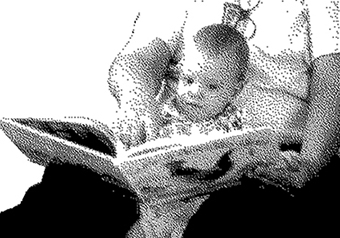New active technology MIND OS 10.2 lifts intelligence in 21st Century children — The U.S. Reading Team Foundation
Actively-directed design project for early speech and thought development creates a new, higher level of cognitive wiring in children who can read at two.

Reading between 18-36 months can wire children to be smarter for life.
LONG BEACH, Calif. – Oct. 9, 2017 – PRLog — The U.S. Reading Team Foundation is launching a program to build more national awareness and begin the critical changes now possible both to improve early human cognitive development and to help end inter-generational American poverty.
Recent research has discovered that human intelligence is not fixed at birth, but can be dramatically strengthened with active programming intervention.
We now know it’s possible to actively program a smarter, more cognitively functional generation of children. With no socio-economic boundaries or limitations.
“Just as we can now actively change and fix our own DNA like no animal before us,” explains USRT Foundation President Dr. Hank Schwarz, “we can also strongly improve our cognitive wiring in the 12-36 month period of our developing brains.
“No need to actually alter our DNA – although in the century ahead that, too, is probably coming, – just wire our speech and thinking to a much higher level of complexity early while the neurological wiring is still open and easy.”
The opportunity was first recognized as an inversion of focus on the results of a major longitudinal study by educational researchers Hart and Risley [The Early Catastrophe:
The researchers found that many parents – challenged by serious socio-economic factors – simply don’t actively speak and converse with their children enough in the critical developmental window between 12 and 36 months to build their vocabulary and parallel speech complexity. And that gap permanently limited the toddlers’ related thinking power, which by the age 9-10 restricted both language skills and reading comprehension.
More recently, additional research studies by Kimberly G. Noble [In: Scientific American, March 2017] have shown that poverty in America is now rapidly creating a brain-affected national underclass that is more likely to drop out of high school, and become permanently impoverished and underemployed as adults.
While the Hart Risley study focus was on cognitive underdevelopment among impoverished children, Dr. Schwarz explained, the inversion or larger possibility revealed by the same research was the opportunity to optimize cognitive development – by actively lifting early cognitive wiring to the highest level – for all children.
It was soon recognized that the best, most versatile frame or scaffold to support this new high-development cognitive objective – with the in-home parent or caregiver spending more time talking and the toddler listening and seeing and learning – was the classic on-paper, page-turning book.
In 2011 a unique language-based learning protocol and program for toddlers was developed using standard, non-electronic on-paper books, with which parents and caregivers could teach toddlers both to speak and to read at the same time.
The program was first offered to parents for free on the original web-based Kids’ Book Network (KBN), and now the same program is provided in a format preferred by most parents – a single pre-published package of 11 books. The program is now being launched and until November 25 is directly available on Kickstarter. See https://www.kickstarter.com/
The program contains no videos or flashcards or other commercial or electronic distractions which have recently confused many parents, and that might actually be harmful to toddler development. Just the opposite.
Unlike conventional books for children, the 10 core Read At Two books are uniquely designed to teach visual wfv words in direct parallel to the way – with close parent-child interaction and affirmation – a child develops oral words, language organization and the power of speech. In addition a complete 40-page Parent Handbook makes it all easy to understand and implement at home.
“It works,” explains Dr. Schwarz, “because it adheres to the extremely basic referent-development protocol a baby requires. First, it gives parents and caregivers the framework to provide their children the critical interactive parent-child talking and language experience that all the research has shown they need.
“Then, reading development – building a parallel whole-word visual vocabulary – is almost a side benefit to the increase in oral vocabulary development and affirmation experience that comes with parents holding their babies on their laps and the toddlers learning to talk.
‘I taught my own child to read at two using the same language-based method and when he entered kindergarten tests confirmed he was already reading at a 6th grade level.
“Our objective now is to put the program into the hands of as many parents and caregivers we can find with toddlers who will benefit immediately, but who might also help us in a larger research project to confirm what works best and what might work even better for every child.
“As the MIND OS 10.2 concept moves forward we expect to begin working in partnership with school districts, libraries and child daycare centers nationwide, organizations and centers who want to participate in an important moment for all children.
“Everyone has to participate,”
“It’s a unique moment of opportunity both in science and human history.”




